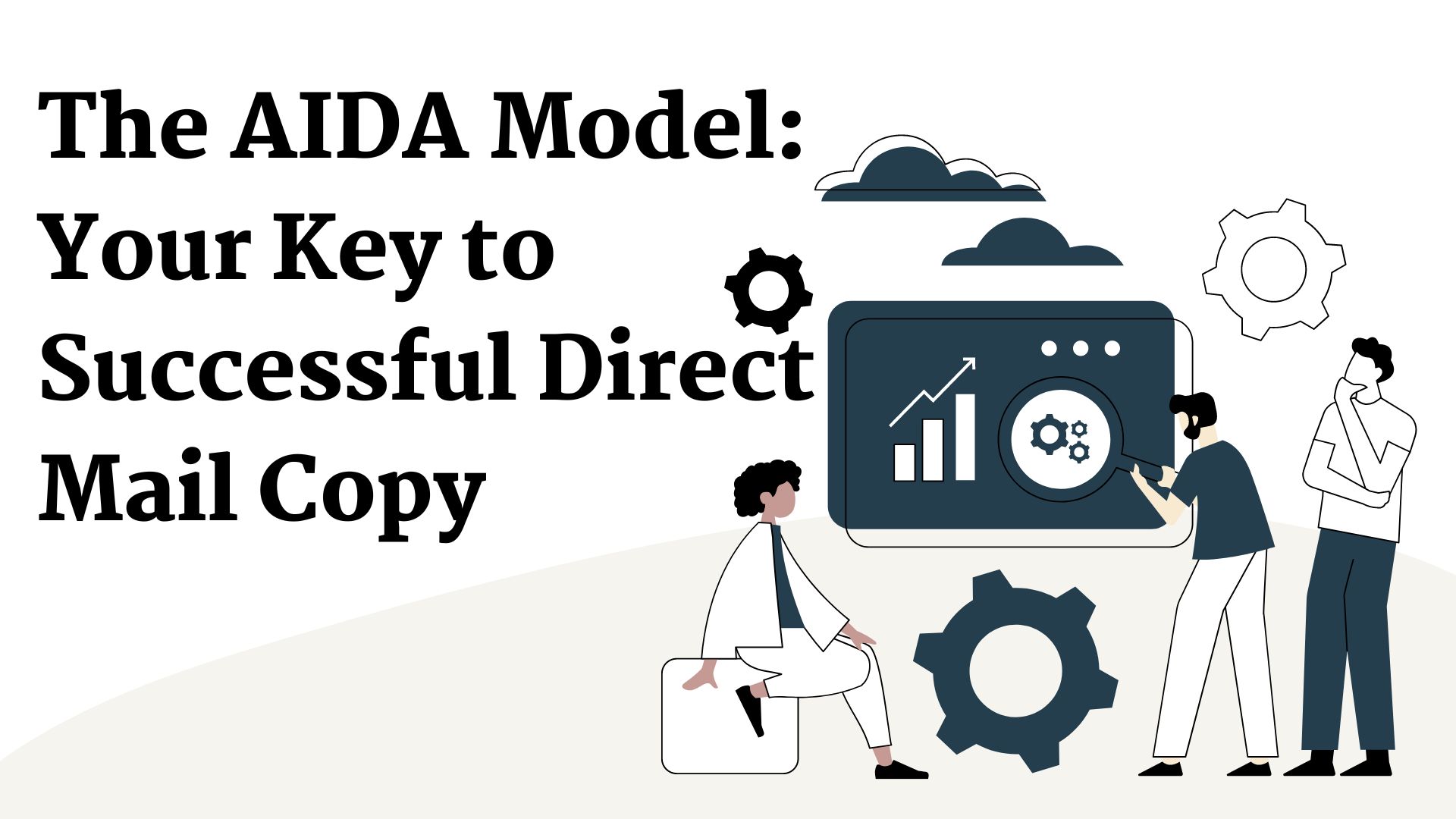“To hold a pen is to be at War.” This metaphor fits well when it comes to today’s competitive marketing space. Talking about marketing, we cannot forget the fact that direct mail is a proven formula for employing successful marketing campaigns. And what makes a great direct mail marketing strategy?
When you use the right words in your direct mail copy, you have the power to enlighten the minds of your consumers, move hearts, and get them to buy your product. For that moment, you have their attention, and how you utilize it is all in your message.
Many successful direct mail marketing companies in the USA utilize an age-old strategy called AIDA. So, what is AIDA? Why is it still widely regarded as one of the most effective strategies of direct marketing? How to utilize AIDA to provide the best direct mail campaign? You shall find all the answers in this blog.
What is AIDA?
If you are new to direct mail or a seasoned print and mail services provider looking for inspiration, the AIDA marketing formula is an “old standard” that consistently achieves big results.
AIDA can be used by a variety of offline advertising and digital marketing products. Direct mail marketing services, websites, emails, sponsored adverts, and even radio and television commercials are examples.
The AIDA model was developed to describe how print and mail advertisement and other forms of marketing communications become interesting to prospects and how buyers differentiate across businesses to make an eventual purchasing choice.
It then describes a series of tasks needed to move a consumer from the awareness stage to the action that results in a conversion. It stands for:
| A | Attention |
| I | Interest |
| D | Desire |
| A | Action |
AIDA: Your Key to Successful Direct Mail Copy
Let us look at how the AIDA formula can be used to optimize your direct mail campaign and help you stand tall against your competitors in the marketing wars.
A – Get Their Attention
For several reasons, this is the best place to begin designing your direct mail copy. You need to catch the prospect’s attention with something that stands out from the rest of their mail, either in huge print or surrounded by white space to focus the reader’s gaze. For instance, a huge headline on a postcard or teaser content on the front of an envelope.
However, not just any copy will suffice. You must communicate something relevant, important, or vital to your intended audience in just a few words. You are already ahead if you know who your audience is and what inspires them, what speaks to their wants and needs, and what their pain spots are.
What it means is, to use language that your prospect can readily read and identify with the product or service you are offering to get their attention. The goodwill or authority that your company’s name carries might also play a significant influence, so now is the time to call upon it. Interrupting their train of thought with a simple term or phrase comes first, with actual specifics like features, benefits, pricing, and other “fine print” coming afterward.
I – Kindle Their Interest
Getting people’s attention is one thing. Keeping your prospects’ attention is something entirely other. The hook that prevents the buyer from throwing away your direct mail piece must be followed with a copy that conveys a story or establishes a need. Drilling deeper into the specifics of their curiosities and questions that they might have demonstrates that you understand them and builds trust.
The objective here is to keep the reader involved, to give them more reasons to keep reading and thinking about their problem, and to start thinking about your solution as you unroll it. This can be accomplished by narrative or another approach that causes the individual to “feel” their pressing situation, prompting them to seek a definitive answer.
The key to the AIDA Interest stage is to personalize the problem so that you are only speaking to the prospect and no one else.
D – Develop Desire
The Desire stage is where you explain to your prospects how your offerings can address their problems. This is where you will describe the qualities of your product or service as well as all the associated benefits. A cherry on top would be to make the prospect believe that only you can solve their problems.
You should start giving your customers concrete reasons to say “yes” to your offer. You will need to be more particular, defining your qualities as distinct benefits that will not only address an issue but also make customers feel better.
The goal here is to break down any sensible resistance your prospect may have for them to become more irresistible.
A – Motivate Action
So, you have progressed from captivating your prospect’s attention to piquing their interest and increasing their desire for your brand. It is now time for the final step: Encourage prospects to take urgent action. Using an emotional driver in the copy can assist you in motivating them
In your direct mail piece, your call to action must be obvious. Consider using bolder text or other techniques, similar to your attention-grabbing headline, to tell readers what to do next or as quickly as possible.
Advertisers may generate a sense of urgency by making the offer available for a limited period or by giving a particular benefit to early birds. If you want more prospects to act at this stage of AIDA, make it simple for them.
Conclusion
The concept of AIDA – Attention, Interest, Desire, and Attraction has been and still is a favorite amongst direct mail marketing service providers. And for good reasons too, AIDA is an undeniably reliable direct mail marketing strategy.
Start working on elements like subject lines, headlines, body content, and calls-to-action in a way that converts maximum prospects into customers using the AIDA Model. If you feel lost, it is also a good idea to employ a seasoned direct mail campaign company to better design your direct mail pieces.
Even so, remember one vital rule: focus on your audience, not on yourself. As you guide them from prospect to customer, they should be able to answer the question, “What’s in it for me?”



